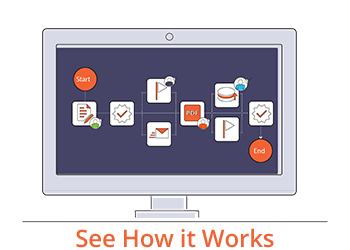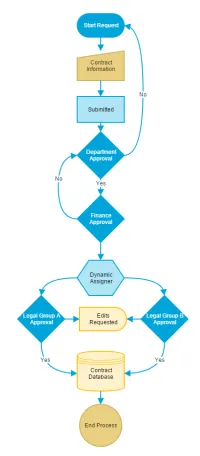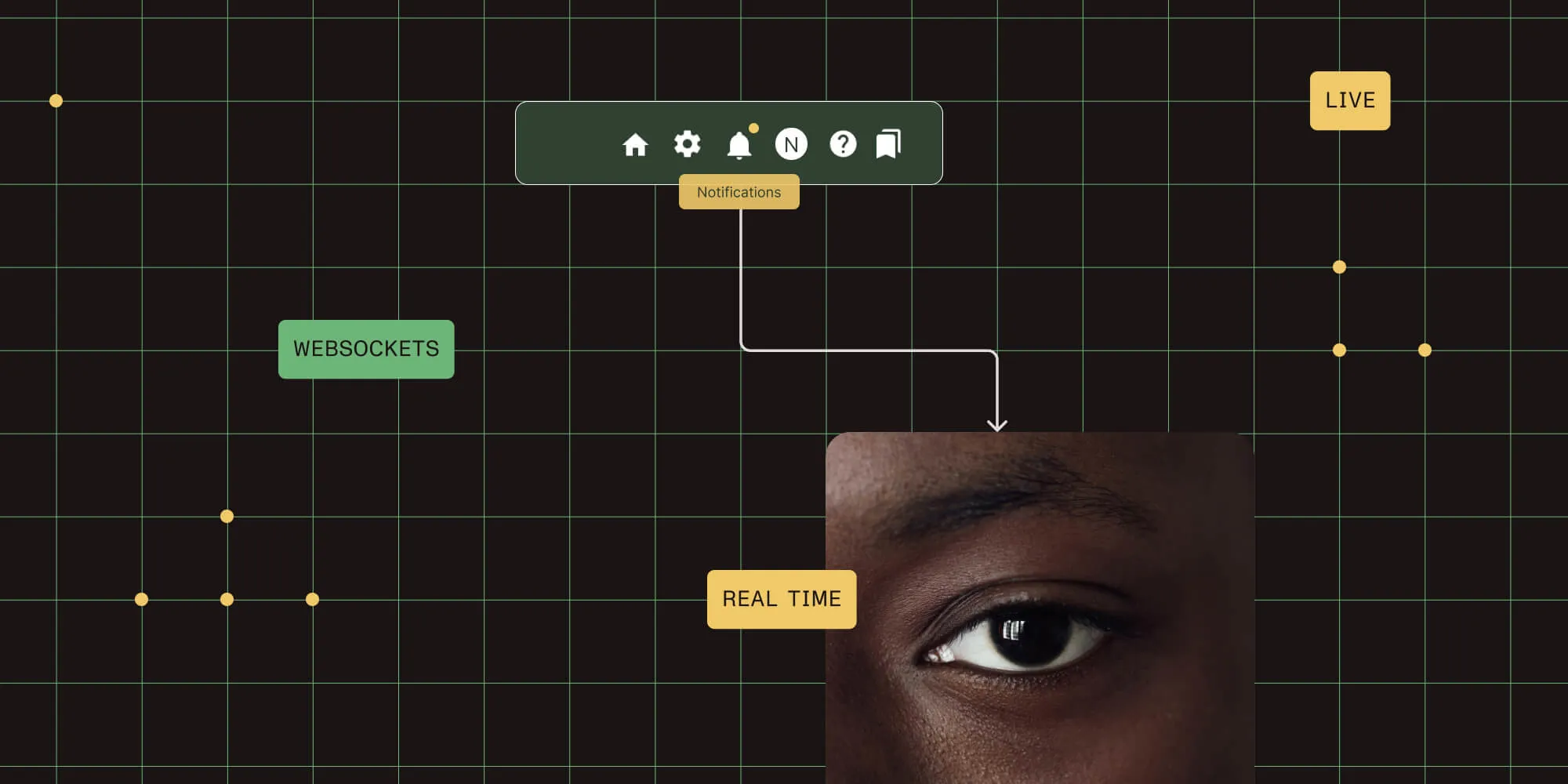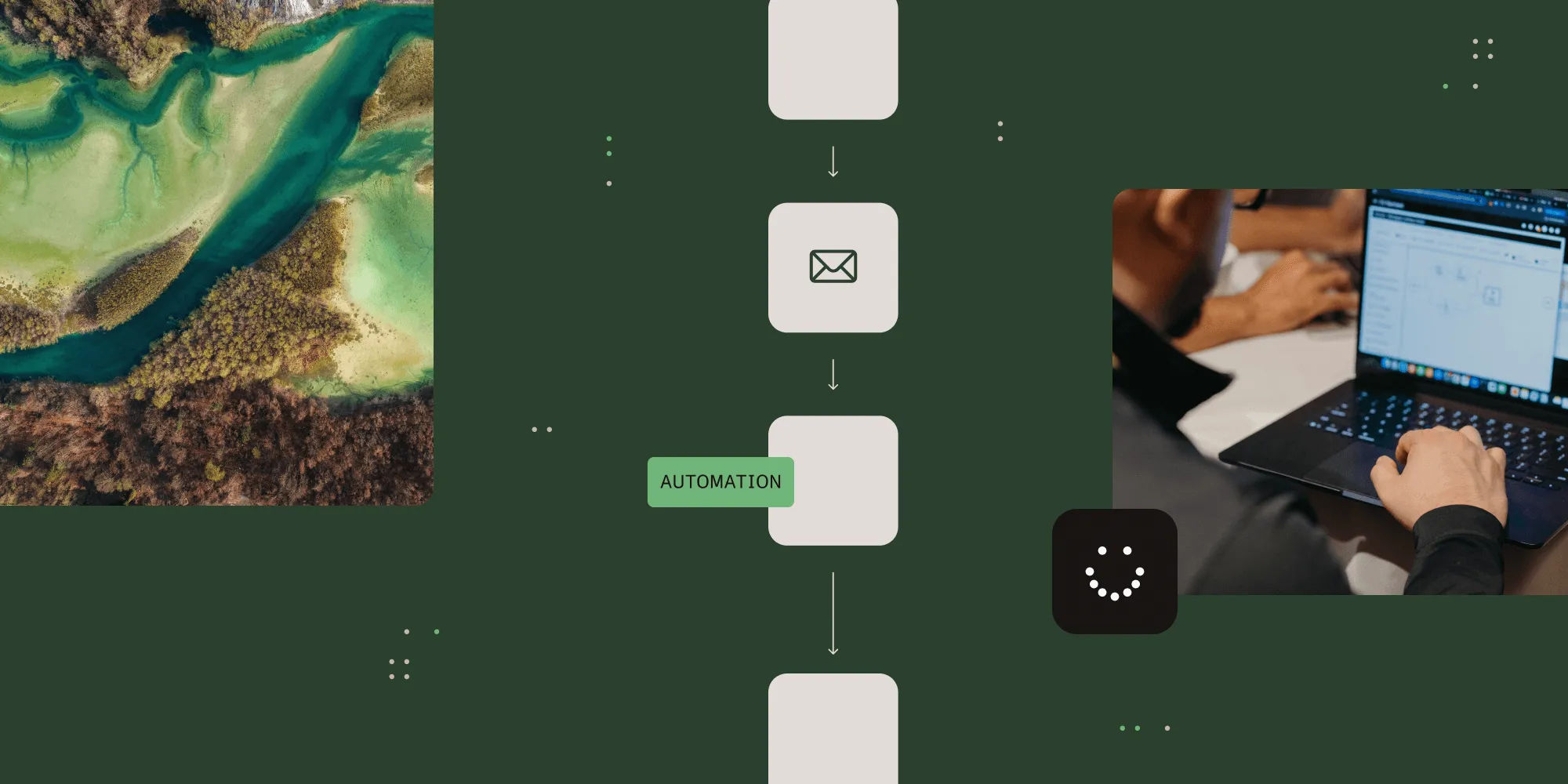Process Flows | What Is a Process Flow?
Table of contents

Try Workflow Automation free for 14 days
Process flows (or process diagrams) provide a visual overview or workflow diagram of all the tasks and relationships involved in a process. Establishing a standardized new process flow can enhance efficiency and reduce inconsistencies in workflow design
Definition and Importance of Process Flow
A process flow is a visual representation of the steps and actions within a specific workflow or business process. It serves as a crucial tool for businesses aiming to streamline, analyze, and enhance their operations. A good process flow diagram provides a clear visual representation, making it easier to identify bottlenecks, inefficiencies, and areas ripe for improvement. By creating a process flow, businesses can ensure that all team members are on the same page, working cohesively towards a common goal. This alignment not only boosts productivity but also fosters a more collaborative and efficient work environment.
The Purpose of Process Flows
The goal of illustrating a process could be two-fold:
- To explain how a process works
- To improve a process
Explaining How a Process Works
Most processes tend to be fairly opaque with a lot of institutional or "tribal" knowledge moving things forward. If you work in an environment like this you probably hear a lot of comments that sound like this:
- "Bob knows what to do with those."
- "Sara handles that."
- "Ed decides which way to go with that."
But how do you explain these processes to new employees or to executives unfamiliar with all the details? A process flowchart template can be used to clarify roles and responsibilities, making it easier for everyone to understand who is responsible for each part of the process.
Benefits of Process Flow
The benefits of process flow are numerous and impactful. A well-designed process flow diagram can significantly improve communication within a team, ensuring that everyone understands their roles and responsibilities. This clarity leads to increased productivity and enhanced collaboration among team members. Additionally, process flow diagrams are invaluable for identifying areas for optimization, which can result in substantial cost savings and improved efficiency. These diagrams also serve as excellent training tools for new employees, helping them quickly grasp the workflow and contribute effectively to the team’s efforts.
Plan and Document Business Processes
Planning and documenting business processes is essential for any organization aiming for efficiency and effectiveness. By creating a process flow diagram, businesses can ensure that all team members understand their roles and responsibilities within the workflow. This visual representation helps in identifying areas for improvement and making data-driven decisions. The result is increased productivity, improved efficiency, and potential cost savings. A well-documented process flow also provides a clear roadmap for continuous improvement, enabling businesses to adapt and evolve their processes over time.
Standardize Business Processes
Standardizing business processes is critical for ensuring consistency and efficiency across an organization. By creating a process flow diagram, businesses can pinpoint areas that require standardization and implement changes to streamline the workflow. This leads to improved quality, increased productivity, and reduced errors. Standardized processes also simplify the training of new employees, ensuring that all team members are on the same page and can perform their tasks consistently. A standardized approach not only enhances operational efficiency but also contributes to a more predictable and reliable business environment.
Analyze Processes for Optimization
Analyzing processes for optimization is a vital step in enhancing business efficiency. By creating a process flow diagram, businesses can visually identify bottlenecks and inefficiencies within their workflows. This analysis allows for targeted improvements, leading to increased productivity, improved efficiency, and cost savings. Process flow diagrams provide a clear visual representation of complex processes, making it easier to spot areas that need attention. By continuously analyzing and optimizing their processes, businesses can maintain a competitive edge and ensure that their operations run smoothly and effectively.
How to Create a Business Process Flow Chart
In most cases, you'll create a process flow using flow chart tools like Visio(opens in a new tab) or LucidChart(opens in a new tab) by dragging and dropping symbols representing tasks, decision points, inputs, etc., and then connecting them in the proper order.
This allows anyone outside of or unfamiliar with the process to follow the workflow step-by-step without a lot of expository explanation.
A process flow template is highly useful in visualizing and managing business processes. It helps professionals like analysts and project managers to clarify specific components and optimize workflows by providing a structured and customizable visual representation.
For detailed information on designing and documenting a process, refer to our blog post "How to Design a Process." By following the tips in that blog, you’ll be an expert in building business process flow diagrams and charts in no time.
Don’t forget, you can always use process flow software like Nutrient Workflow to automate the process (more on this later).
Improving a Process
It's one thing to show how a business process works currently; it's another to show how the process could work better in the future.
This is the goal of process improvement—to improve the efficiency and accuracy of a process by reviewing its current state and finding ways of improving it.
There are a variety of process improvement methodologies to consider, which we document in another article. Learn some excellent techniques for process flow analysis and improvement in that post.
Process Examples
Every department and group in an organization runs on some kind of process. Some are simple, like submitting a request for vacation time. Others are much more complex, like developing a new product.
We've compiled many common workflow examples that we've seen in the field in other articles but here's one example.
We have a great resource you'd like to learn more about creating a workflow diagram. These process diagrams are indispensable for any business, and you should be sure to utilize them as much as possible.
Contract Approval Process
This simple example shows the process flow of a contract that needs to be reviewed and approved by the Finance Department and then the Legal Department before being pushed into a contract database.
Tips for Creating Business Process Flow Diagrams
Creating a business process flow diagram can seem simple at first but the more you dig into how the work gets done in your organization, the more you may find yourself struggling to recreate it visually. Here are some tips:
- Each box or icon should represent a SINGLE action or decision.
- When using a decision box (usually a diamond), label the arrows leading to the next logical steps with a question (Completed? Approved? etc.)
- Avoid having arrows cross over each other, which can confuse viewers.
- Create separate/child flow diagrams for subprocesses. You can note this within the main process illustration (e.g., "See Approval Subprocess.")
For more tips on creating process flows and anything else process-related, check out our free Business Process Management Guide(opens in a new tab).
Why Do You Need a Business Process Flow Diagram or Chart?
You may think that you have a good sense of your business processes, so why do you need to visualize them with a process flow diagram or chart? The reality is that outlining them and visualizing them can simply help you see bottlenecks or identify pain points more clearly than you ever could with processes written out in plain text.
Creating a work process flow chart can, for instance, help you realize that many decisions are running through one specific individual or team, which could lead to catastrophe (or at least lots of headaches) when that individual goes on vacation or comes down with an illness and can’t work for some time.
Humans are, on a fundamental level, visual creatures. We can have the facts in front of us in plain text, but may not pull together all the requisite connections until we see the information visualized. Business process flow analysis is made much more straightforward when you use a simple process flow diagram to outline your processes and decision-making.
Next Step: Process Automation With Process Flow Software
While it's helpful to document and illustrate your processes, to take them to the next level, you'll need to consider process automation.
By automating your processes, especially those that are currently handled manually, significant benefits can be realized:
- Greater Productivity
- Improved Job Satisfaction
- Increased Efficiency
- Full Audibility and Tracking
- Improved Accuracy
Building automated processes is similar to building process flow diagrams except, once completed, they become living, working processes where:
- Tasks are generated and assigned
- Alerts, reminders, and escalations are sent
- Actions, like providing approvals, trigger additional tasks
- Activity and performance is tracked
- Data is pushed into and pulled from other systems
Automation helps keep work moving forward while allowing teams to look back at performance, identify bottlenecks, and reduce mistakes.
Interested in Turning Process Flows into Automation?
We have a variety of resources to help you on your journey to an automated workflow.
- Workflow Tools and eBooks
- Workflow Ideas Weekly eMail Newsletter(opens in a new tab)
- Recorded Demonstration of our Workflow Automation Software
- Request a Live Demonstration(opens in a new tab)
Project managers can utilize these resources to enhance understanding and communication within teams by documenting processes, tracking project milestones, and ensuring that all team members are aware of their responsibilities and the logical flow of tasks.
FAQ
A process flow diagram is a visual representation of the steps, tasks, and decisions involved in a specific workflow or business process.
Process flows help businesses streamline operations, improve communication, and identify inefficiencies, leading to enhanced productivity and collaboration.
To create an effective process flow diagram, use flowchart tools to visually map out each task and decision point, ensuring clarity and logical progression.
Common mistakes include overcrowding the diagram with too much information, using inconsistent symbols, and failing to clearly label decision points.
Process flows serve as clear visual aids that help new employees understand their roles, responsibilities, and the overall workflow, making onboarding more efficient.









